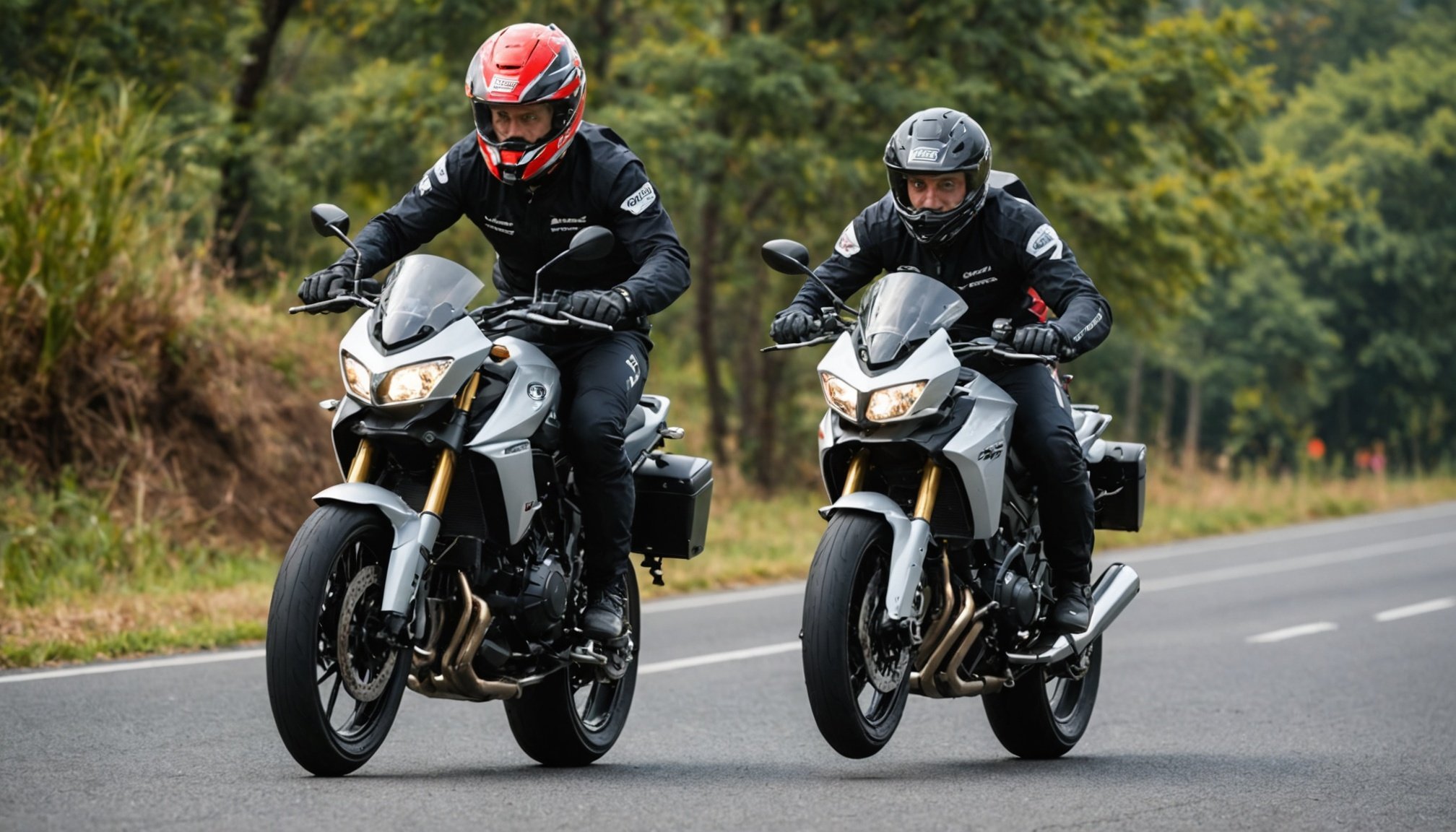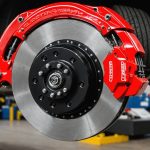Navigating the complex terrain of balancing speed and safety while riding a motorcycle is a challenge that many riders face. With the exhilarating rush of wind and the rhythmic hum of engines driving your passion for the open road, it’s easy to overlook the essential aspects that keep you secure. Yet, understanding how to maintain safety without sacrificing the joy of the ride is critical for both seasoned riders and novices.
In this article, we’ll delve into practical strategies that help you find that elusive balance. We’ll explore the dynamics of managing speed, maintaining focus on safety, and ensuring your journey is not only thrilling but also secure. By the end, you’ll be equipped with insights and tips that enhance your riding experience while keeping you and others on the road safe.
This might interest you : How can you find the best motorcycle clubs or groups in your area?
Understanding the Dynamics of Speed and Safety
When you twist the throttle and feel the surge of power, you’re not just accelerating your bike; you’re engaging in a delicate dance between thrill and caution. Speed is undeniably alluring, yet it carries inherent risks. Therefore, understanding the dynamics between speed and safety is crucial for every rider.
Speed, though exciting, can drastically reduce your reaction time. It narrows the margin for error, making it challenging to respond to sudden changes in traffic patterns or unexpected obstacles. Keeping a safe distance from vehicles in front is vital to ensure you have ample time to react.
Also read : How can you avoid common mistakes when learning to ride a motorcycle?
Moreover, speed influences your control over the motorcycle. The faster you ride, the more demanding it becomes to navigate turns and corners. Each twist of the throttle requires increased precision and awareness, highlighting the importance of pace control.
In considering safety, familiarize yourselves with the limitations and capabilities of your motorcycle. Knowing how your bike responds at different speeds aids in maintaining control and mitigating risks.
Ultimately, achieving a balance begins with understanding that while speed is part of the riding thrill, safety is the foundation that ensures you can enjoy future rides.
The Role of Defensive Riding in Ensuring Safety
Defensive riding is an essential component of maintaining safety on the roads. As riders, being aware of your surroundings and anticipating potential hazards elevates your ability to respond effectively. This proactive approach not only protects you but also improves the overall safety of those sharing the road.
Defensive riding involves anticipating the actions of other vehicles. Always assume that drivers may not see you and position yourself in a way that increases your visibility. Whether you’re riding in the right or left lane, ensure you are visible to vehicles approaching from behind, front, or sides.
A significant aspect of defensive riding is maintaining a safe distance from other vehicles. This buffer not only gives you time to react but also reduces the chances of collisions. Keep in mind that bicycles and pedestrians may also share your space, necessitating a cautious and respectful approach.
Another critical element is mastering the art of safe turns and lane changes. Signal your intentions clearly and allow other drivers ample time to react. By doing so, you not only protect yourself but also set a standard for road coexistence.
Ultimately, defensive riding is about vigilance, anticipation, and respect. By adopting these practices, you ensure your rides remain safe and enjoyable.
The Psychological Aspect of Speed and Its Impact on Riding
Speed is as much a psychological phenomenon as it is a physical one. The adrenaline rush accompanying rapid motion can be intoxicating, often leading riders to push boundaries without considering safety implications. Understanding the psychological draw of speed helps in finding a balanced approach.
The thrill of speed can cause a temporary lapse in judgment. When adrenaline takes over, your focus narrows, sometimes leading to risky decisions. Recognizing these tendencies allows you to consciously adjust your speed to maintain control and safety.
Another psychological factor is the influence of group dynamics. Riding in groups can lead to a pack mentality, where you unconsciously match the pace of fellow riders, often disregarding personal safety limits. By setting your own riding parameters, you ensure that you’re not swayed by external pressures.
Staying mindful of your emotional state when riding is crucial. Fatigue, stress, or excitement can all negatively impact your decision-making ability. Before each ride, assess your mental readiness to ensure you’re in the best frame of mind for both speed and safety.
Ultimately, being aware of the psychological aspects of riding empowers you to make informed choices that prioritize your well-being while indulging your passion for speed.
Practical Tips for Balancing Speed and Safety
Finding the right balance between speed and safety is possible with a few practical tips and strategies. By incorporating these into your riding practice, you can enjoy the thrill of the ride while keeping your safety and that of others paramount.
1. Regular Maintenance: Keeping your motorcycle in top condition is essential. Regularly check your brakes, tires, and lights to ensure they’re functioning optimally. A well-maintained bike responds better to sudden changes and enhances your control.
2. Wear Protective Gear: Investing in quality riding gear is crucial. Helmets, jackets, gloves, and boots provide an additional layer of protection, minimizing the impact of unforeseen incidents on the road.
3. Obey Traffic Rules: Adhering to traffic signals and speed limits isn’t just about compliance but about keeping yourself and others safe. Rules are designed to create harmony on the roads, and following them ensures a smooth ride.
4. Practice Situational Awareness: Stay alert to changes in traffic patterns and road conditions. Adjust your speed accordingly and be prepared to react to unexpected developments.
5. Take Riding Courses: Enrolling in advanced riding courses helps refine your skills and enhances your understanding of safe riding techniques. Even experienced riders can benefit from periodic skill refreshers.
Balancing speed and safety is an ongoing journey. By integrating these tips into your riding habits, you secure a future of thrilling yet safe journeys.
Striking the right balance between speed and safety while riding a motorcycle is an art that requires dedication and mindfulness. As riders, embracing both the thrill of speed and the necessity of safety ensures that each journey is as enjoyable as it is secure.
By understanding the dynamics of speed, adopting defensive riding practices, being aware of psychological influences, and following practical tips, you equip yourselves with the tools to ride confidently. The road ahead is filled with possibilities, and with the right balance, you can explore it with both excitement and peace of mind.
Remember, the essence of riding lies not just in the thrill of the journey but in the assurance of arriving safely at your destination. Make each ride a testament to your commitment to balance, and enjoy every turn, twist, and open road with the knowledge that you are riding responsibly.











